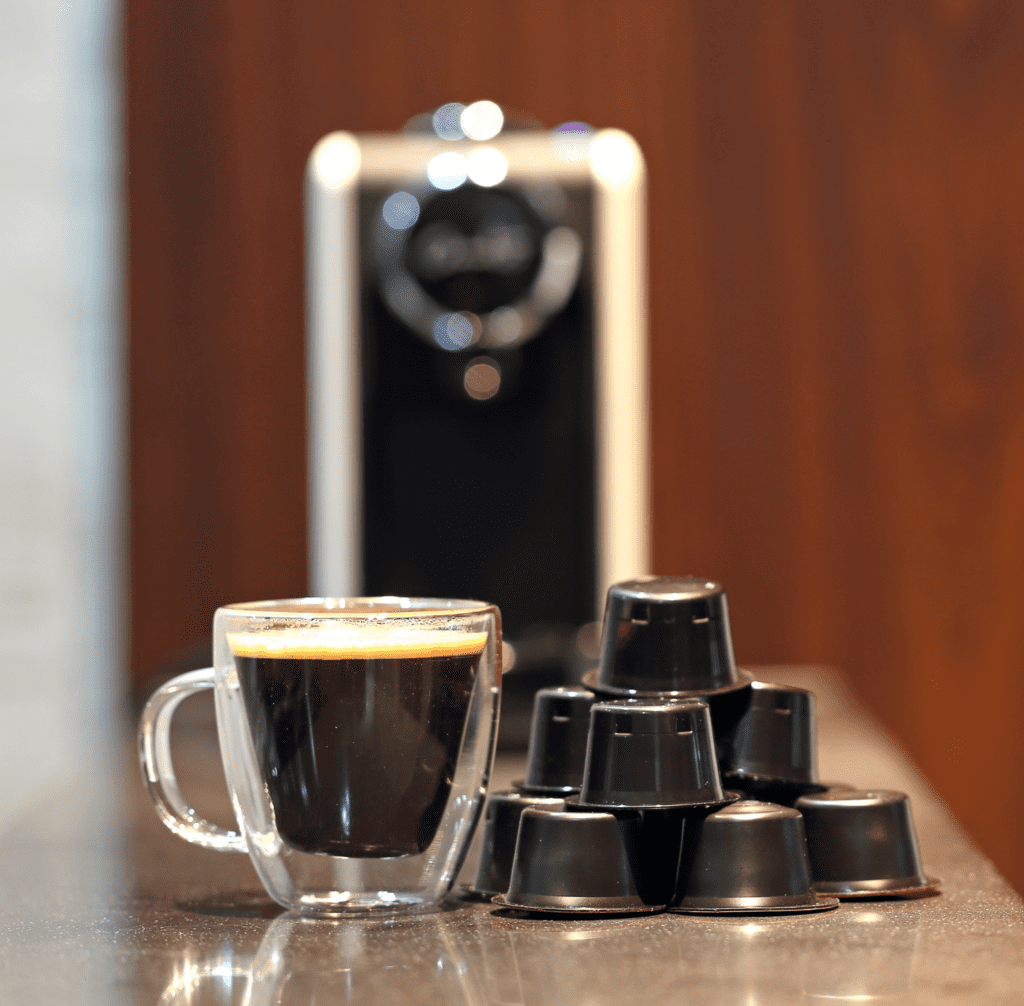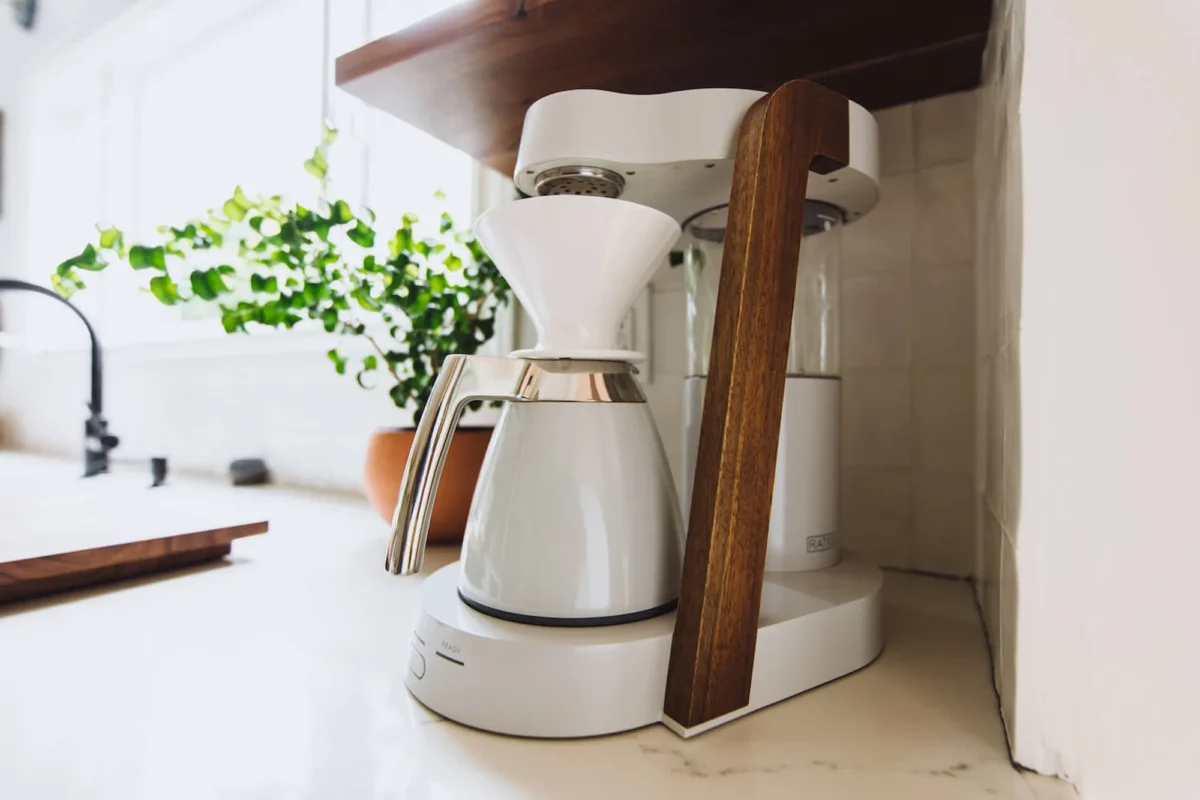Are you a K-cup enthusiast wondering if K-cup coffee pods are bad for you? You may have heard about oily films floating on the surface of “freshly” brewed coffee or funny tastes—neither of which seem too healthy.
And you can’t ignore the reported medical challenges of many Keurig users: allergic reactions, gastrointestinal disturbances, and depression, just to name a few. Are these adverse health impacts caused by K-cup pods?
You might be thinking the new and improved K-cup pods don’t suffer from these pitfalls. It was only the original K-cups that were bad for you, right? But how true is that?
In this article, you’ll discover if K-cups are bad for you from a health perspective. If you decide the evidence against Keurig coffee pods is strong enough to merit a lifestyle change, the section on natural K-cup alternatives will guide your journey to better health.
Table of Contents
- K-Cups Then and Now: Are They Safer?
- Estrogenic Activity in #5 Plastic
- Estrogenic Activity of the Additives in #5 Plastic
- Antibacterial Additives in #5 Plastic K-Cup
- PFAS in Biodegradable K-Cups
- Are #5 K-Cups Recycled?
- Alternatives to Plastic K-Cups
- Key Takeaways on How Bad K-Cups (and Similar Coffee Pods) Are for You
K-Cups Then and Now: Are They Safer?
A few years ago, K-cup pods were made of #7 plastic. You could tell by seeing the number seven inside the recycling symbol on the bottom of the cup. Type #7 plastic is a hodge-podge of all sorts of other types of plastics plus added chemicals, some of which are proprietary. This means you’ll never know for sure what’s in the mix. Many plastics rated #7 contain BPA (bisphenol A), which is known to disrupt hormones.
Since 2020, Keurig (which has undergone several official business name changes, including Green Mountain Coffee Roasters) sells K-cup coffee pods made of #5 plastic. On the bottom, you’ll see the number five in the recycling symbol.
Type #5 plastics are made of polypropylene, plus added chemicals. You may have heard the new K-cups are BPA-free. Some K-pod companies may even claim theirs are biodegradable or compostable. (More on this later.)
Unfortunately, this doesn’t mean K-cups are safer for you. All it means is that Keurig has removed some of the mystery of what K-cups actually are composed of—while adding new uncertainties about what other chemicals could be in K-cups today.
Before you go out and purchase these newer K-cup pods believing they’re harmless, it’s a good idea to read the rest of this article. You may be surprised to learn what toxins may be lurking in them.

Estrogenic Activity in #5 Plastic
You’ve probably heard of the common endocrine disruptor, bisphenol A (BPA). Like all chemicals that mimic or prevent the actions of a class of female hormone called estrogens, BPA is known as having estrogenic activity (EA).
Even a small amount of an EA chemical has the potential to cause detrimental changes to the human reproductive system, from female fetuses still in the womb to women of child-bearing age. BPA is typically associated with #7 plastic, also called polycarbonate (PC).
But almost all plastic types, including the #5 plastic in Keurig cups that are labeled as BPA-Free, can possess EA activity. Ironically, even plastic marketed as BPA-Free may show more estrogenic activity than BPA itself!
A 2011 study published in Environmental Health Perspectives tested all plastic types and recorded the percentage of samples showing levels EA that alter cells’ normal activities and development. Investigators used a cell proliferation assay, which is very sensitive and accurate, to quantify the EA of chemicals leached into saline (salt) or ethanol solutions.
The researchers used saline and ethanol solutions to simulate different liquids. For example, saline is more like coffee than ethanol, chemically speaking. This means the results from the saline trials (see table below) are more representative of what would happen in coffee cups than the ethanol trials. The reason is that similar substances dissolve into one another (a.k.a leach) more easily than unlike substances.
Here are some EA data for #5 plastic from this study. The percentage of samples showing significant EA in various solvents is indicated in the table below. Note that saline solutions had substantially more EA activity than ethanol solutions. The number of samples tested for each type of solution varied between 6 to 23.
| Plastic type | Ethanol | Concentrated ethanol | Saline | All solvents |
| #5 | 52 | 33 | 81 | 68 |
(It’s worth noting that this 2011 study has come under some controversy, due to the fact that the researchers were selling their own EA-free plastics at the time. If interested, you can read more about that here.)
Estrogenic Activity of the Additives in #5 Plastic
You may think that Type #5 plastic is just polypropylene. This is not usually true. Plastics manufacturers put additives into their formulas that they are not legally required to divulge to the general public.
Often, additives aren’t actually chemically bonded to the plastic molecules. They are just in physical proximity. This means the additives could easily leach away into a food or beverage, especially if subjected to heat or agitation.
Some of the most common additives to plastic are antioxidants. These minimize degradation in the presence of oxygen. You may have seen the names of two of the most frequently used additives on food labels: BHT and BHA.
Unfortunately, BHT and BHA show reliably detectable estrogenic activity. So, too, do a host of other plastics additives, especially when exposed to moist heat—like the hot water you put through a Keurig coffee machine, maybe?

Antibacterial Additives in #5 Plastic K-Cup
The Keurig Company probably chose #5 plastic for their K-cups because polypropylene is believed to be a “safe” plastic for food use. While it may be safer compared to some other types of plastic, proprietary antibacterial additives unfortunately make #5 plastic unsafe.
Quite by accident, medical researchers discovered the presence of quaternary ammonium biocides in their plastic #5 labware that were responsible for skewing their lab results after it had leached into their test tube experiments. Biocides are antimicrobial agents.
Although Keurig won’t say which additives are in their K-cup coffee pods, know that some of them may be hazardous to your health, like Microban, a triclosan-based antimicrobial. Companies which market additives to the plastics industry sell Microban.
Remember Triclosan in certain brands of toothpaste? Triclosan has been linked to hormone disruption and increased risk of breast cancer. It’s now been banned from certain consumer products, such as anti-bacterial hand soap.
PFAS in Biodegradable K-Cups
A 2019 study published in Environmental Science & Technology Letters revealed the presence of significant amounts of per- and polyfluoroalkyl substances (PFAS) and their degradation products in composting facility leachate. This hazardous liquid is believed to come from biodegradable food and beverage containers, just like certain brands of coffee pods are marketed.
If the compost is used as fertilizer, crops and plants will uptake the PFAS. When you eat this food, you’re indirectly consuming PFAS, too.
PFAS—also called forever chemicals because they don’t readily break down on their own—are linked to a number of negative health outcomes including cancer, hormone disruption, and immune system deficiency.
Incidentally, if your K-cup coffee pod is biodegradable or compostable, you can’t just throw it on your backyard compost pile and watch it disappear. The majority of the time, it will need to go to an industrial composting facility—of which there aren’t many in operation.
RELATED: Could your Keurig be making your acutely sick?
Are #5 K-Cups Recycled?
Although #5 plastics are labeled recyclable, the reality is they rarely are. It’s considerably less expensive to make virgin plastic from fossil fuels than it is to recycle plastic, so companies purchase the cheaper stuff.
In other words, Keurig K-cups just aren’t bad for you. They’re also bad for the environment.
If #5 K-cups, along with #5 yogurt containers and margarine tubs are recycled, they would be downcycled to make park benches or lawn furniture—not new food or beverage containers. But, usually, recycling centers are equipped to process only Types #1 and #2 plastic. This means K-cups are landfilled or incinerated.
Incidentally, recycling centers aren’t at all equipped to separate out the various types of plastics in the older #7 K-cups either. They get landfilled, incinerated, or float out to sea as part of the burgeoning ocean gyres (patches) of plastic pollution. The small size of K-cups practically guarantees that they won’t be recycled.
Discarded K-cups will only add to the 40 million tons of plastic trash the United States produces every year. That’s about 487 pounds per person—or five times the global average.
Alternatives to Plastic K-Cups
If you’re so enamored by K-cups that you can’t let go of the convenience, a stainless steel, reusable filter that works in both 1.0 and 2.0 Keurig coffee maker models may be the best way to stay safe from the soup of toxic chemicals that K-cup pods may leach into your coffee.
You could always go the safer, traditional route and choose non-toxic glass or stainless steel coffee makers. Click here for our in-depth guide into the best non-toxic coffee makers.
Home
How to Choose a Non-Toxic & Plastic-Free Coffee Maker
Don’t be fooled by “BPA-free” coffee makers—they can still contain toxins. Here’s how to find truly non-toxic and (almost) plastic-free coffee makers.
Key Takeaways on How Bad K-Cups (and Similar Coffee Pods) Are for You
If you’re a coffee lover, the convenience of K-cups draws you to indulge on a daily basis—sometimes more. But serious health considerations arising from drinking a hot liquid from a plastic cup make you wonder if K-cup pods are bad for you.
Even the second-generation #5 plastic, “BPA-Free” polypropylene K-cups may possess endocrine activity (EA), just like BPA does. Only a tiny amount of potent EA chemicals that leach into your coffee can have big effects on your endocrine system in the long run.
It upsets many natural hormonal balances in your body, especially the reproductive system. For this reason, adolescents in puberty and women of child-bearing age should be especially concerned about drinking from K-cups.
Type #5 plastic may also contain antimicrobial substances like triclosan, another chemical with endocrine activity. Biodegradable K-cup pods may contain PFAS. There are numerous adverse health outcomes associated with PFAS including cancer.
Fortunately, coffee lovers have several natural alternatives to K-cups that will give them their daily caffeine fix. A reusable Keurig filter made of stainless steel bypasses the need for plastic cups all together. An all-metal or glass coffee maker is another non-toxic option.






And yet the plastic industry is allowed to continue to poison us…